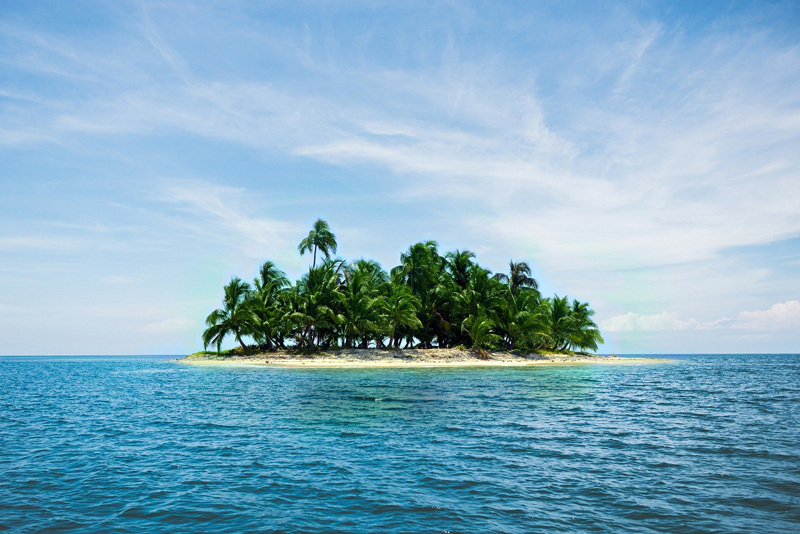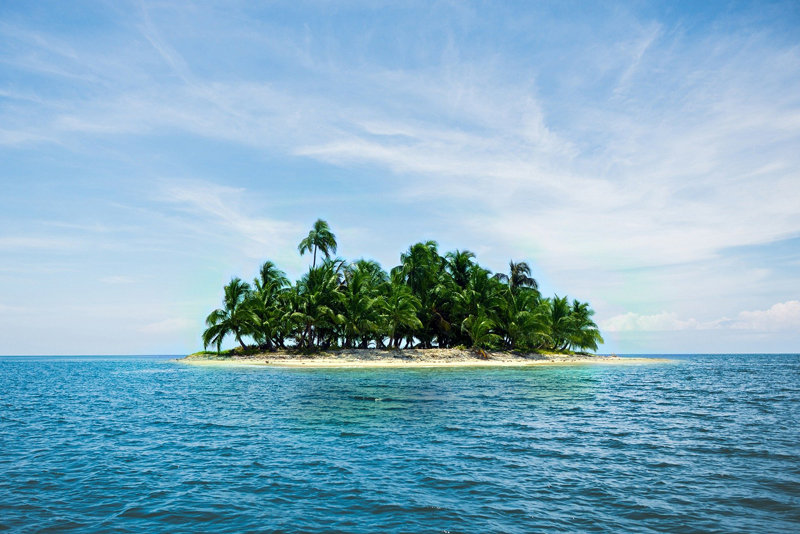Portugal - Unexpected Islands

Many images spring to mind at the mention of Portugal – port, fado, copper, charming villages and friendly people. Yet, the image of islands is not the first thing to come to mind and that is unfortunate. Portugal has many small and interesting islands, easily visited from the mainland.
The Berlengas Archipelago is a group of very small islands near the fishing port of Peniche, about an hour north of Lisbon. Their geological nature is markedly different from that of the Portuguese coast. With their own particular fauna and flora, their ecosystem is unique in the world, which eventually led to their designation as the Berlengas Nature Reserve in 1981. These days the archipelago has no permanent population and is a nature preserve for sea birds. Once only visited by scientists, the Berlengas Nature Reserve now attracts a growing number of tourists and makes an excellent day trip by boat.
The Berlengas Archipelago consists of three groups of small islands: Berlenga Grande, Ilha Velha and the nearby reefs, and several smaller islands. Berlenga Grande (or Big Berlenga) is 1,500 meters by 800 meters at 85 meters in height. The small island there offers beaches and several caves, and its clear waters feature barrier reefs and vibrant marine life. Part of the island broke off millennia ago and formed the island of Ilha Velha (Old Island). In the summer, the island is covered with colorful wild flowers.
History is tucked into the natural beauty of these islands. The fort on the island of Berlenga Grande was built in 1651 by order of the King, D. João IV, and completed in 1656. In June 1666, a Spanish fleet composed of 14 warships besieged the fort. Defended by a small garrison of less than 20 men and armed with only nine pieces of artillery, the fort held out for two days against the enemy's fierce bombardment, while also inflicting heavy casualties on the besieging forces.
Cerveira's Island of Love (Norte)
The town of Vila Nova de Cerveira was founded in the 14th century by king Dom Dinis, on the border with Spain on the banks of the River Minho. Today, Vila Nova de Cerveira has a wide variety of monuments, but in the river off its sores is the tiny isle of Love, a green spot in the Minho, whose lush vegetation gave it the name Ilha dos Amores (island of love). Never settled, reachable by boat, it is a sanctuary of nightingales singing and trout jumping by in the water.
Algarve's Barrier Islands
A contrast to the modern beach of the Algarve is the idyllic Ria Formosa estuary. This labyrinth of canals, islands, marshland and sandy beaches that extend 40 miles along the Algarve coast between the beaches of Garrão and Manta Rota.
This diversity of eco-systems attracts a varied range of animal life including many bird species. One of the rarest species is the purple swamphen, the symbol of their Natural Park that cannot be found in any other part of the country. The Marim Environmental Education Centre will point out the best hiking trails and spots where it is possible to spy on the day-to-day activities of the various species. The Park also organizes sightseeing rides in a traditional boat that was formerly used for tuna fishing.
One of the most friendly species that can be found here is the Portuguese water dog. This is a long-haired dog, which helps fishermen in their work, by diving and catching fish caught in the nets.
Other traditional activities of the local population living in the estuary area include extraction of salt and gathering of shellfish and bivalves (mussels, oysters, clams, razors, etc). These are used to create delicious specialties, such as fish soup or razor fish rice, that can be enjoyed in the seaside restaurants.
All those who love the sun and sea will relish an encounter with the remote and genuine wildness of the islands located in the Ria Formosa estuary. From west to east, are the islands of Faro, Barreta, Culatra, Armona and Tavira, with extensive stretches of sand and relatively deserted. In order to round off the trip, it's well worth visiting Cacela Velha, a white town with a notable historical heritage. From the top of the fortress, there are endless views of the surroundings - mingling together the blue tones of the estuary, sea and sky.
So there you are, many more images, of islands, to come to mind at the mention of Portugal.
The Berlengas Archipelago is a group of very small islands near the fishing port of Peniche, about an hour north of Lisbon. Their geological nature is markedly different from that of the Portuguese coast. With their own particular fauna and flora, their ecosystem is unique in the world, which eventually led to their designation as the Berlengas Nature Reserve in 1981. These days the archipelago has no permanent population and is a nature preserve for sea birds. Once only visited by scientists, the Berlengas Nature Reserve now attracts a growing number of tourists and makes an excellent day trip by boat.
The Berlengas Archipelago consists of three groups of small islands: Berlenga Grande, Ilha Velha and the nearby reefs, and several smaller islands. Berlenga Grande (or Big Berlenga) is 1,500 meters by 800 meters at 85 meters in height. The small island there offers beaches and several caves, and its clear waters feature barrier reefs and vibrant marine life. Part of the island broke off millennia ago and formed the island of Ilha Velha (Old Island). In the summer, the island is covered with colorful wild flowers.
History is tucked into the natural beauty of these islands. The fort on the island of Berlenga Grande was built in 1651 by order of the King, D. João IV, and completed in 1656. In June 1666, a Spanish fleet composed of 14 warships besieged the fort. Defended by a small garrison of less than 20 men and armed with only nine pieces of artillery, the fort held out for two days against the enemy's fierce bombardment, while also inflicting heavy casualties on the besieging forces.
Cerveira's Island of Love (Norte)
The town of Vila Nova de Cerveira was founded in the 14th century by king Dom Dinis, on the border with Spain on the banks of the River Minho. Today, Vila Nova de Cerveira has a wide variety of monuments, but in the river off its sores is the tiny isle of Love, a green spot in the Minho, whose lush vegetation gave it the name Ilha dos Amores (island of love). Never settled, reachable by boat, it is a sanctuary of nightingales singing and trout jumping by in the water.
Algarve's Barrier Islands
A contrast to the modern beach of the Algarve is the idyllic Ria Formosa estuary. This labyrinth of canals, islands, marshland and sandy beaches that extend 40 miles along the Algarve coast between the beaches of Garrão and Manta Rota.
This diversity of eco-systems attracts a varied range of animal life including many bird species. One of the rarest species is the purple swamphen, the symbol of their Natural Park that cannot be found in any other part of the country. The Marim Environmental Education Centre will point out the best hiking trails and spots where it is possible to spy on the day-to-day activities of the various species. The Park also organizes sightseeing rides in a traditional boat that was formerly used for tuna fishing.
One of the most friendly species that can be found here is the Portuguese water dog. This is a long-haired dog, which helps fishermen in their work, by diving and catching fish caught in the nets.
Other traditional activities of the local population living in the estuary area include extraction of salt and gathering of shellfish and bivalves (mussels, oysters, clams, razors, etc). These are used to create delicious specialties, such as fish soup or razor fish rice, that can be enjoyed in the seaside restaurants.
All those who love the sun and sea will relish an encounter with the remote and genuine wildness of the islands located in the Ria Formosa estuary. From west to east, are the islands of Faro, Barreta, Culatra, Armona and Tavira, with extensive stretches of sand and relatively deserted. In order to round off the trip, it's well worth visiting Cacela Velha, a white town with a notable historical heritage. From the top of the fortress, there are endless views of the surroundings - mingling together the blue tones of the estuary, sea and sky.
So there you are, many more images, of islands, to come to mind at the mention of Portugal.

Related Articles
Editor's Picks Articles
Top Ten Articles
Previous Features
Site Map
Content copyright © 2023 by Ann Carroll Burgess. All rights reserved.
This content was written by Ann Carroll Burgess. If you wish to use this content in any manner, you need written permission. Contact Malika Bowling for details.



